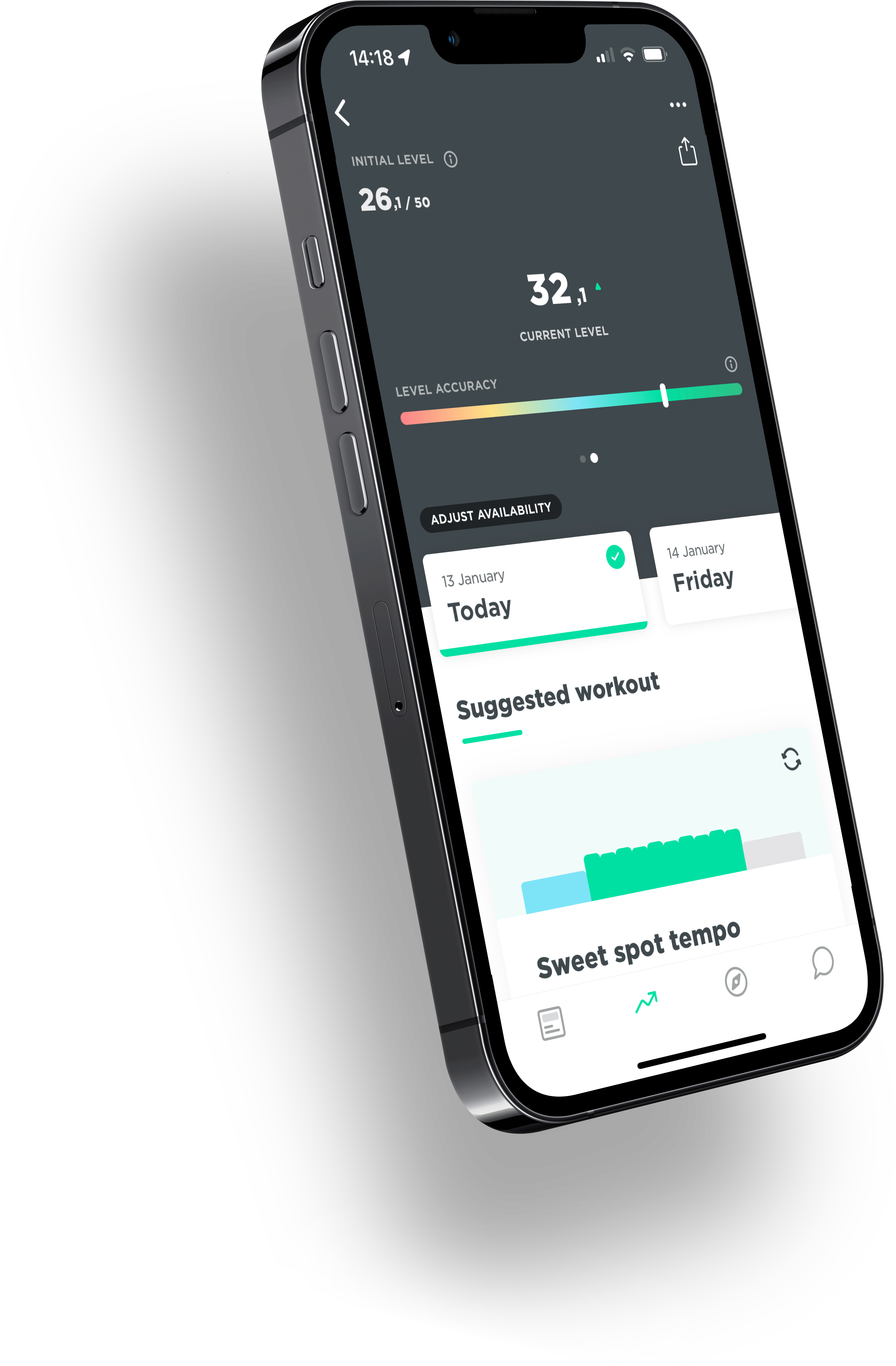What is the ideal cadence?
One of the most written about subjects in cycling is the cadence. One of the reasons is that nowadays there is a very wide range to choose from. Looking back at the 1980’s, the smallest chainring had 42 teeth and the biggest sprocket was a 19T. Today you can buy group sets with 34T for both the chainring as well as the cassette which can give you a gearing ratio that is twice as light. With these options available, even the steepest climbs have become rideable for almost everyone. Albeit at a rather low speed, if you need 34×34 to get to the top!
But in addition to the large range of chainrings and sprockets, we also see many professional cyclists riding up a mountain with quite a high cadence. This helps to heat up the discussions about cadence because most recreational cyclists find it hard to cycle with a high cadence (over 90 rpm or so). So what exactly is going on here? Before we dive into this, there are a few differences that are often overlooked. For example, there is a difference in ideal cadence, in which many factors play a role, and the most efficient cadence (the optimum between the energy consumption and delivered power).
The least oxygen consumption.
Contrary to what you might think, the most efficient cadence in terms of energy demand and power delivery is a low one. Research shows that for both experienced and inexperienced cyclists, oxygen consumption is significantly lower at a cadence of 60 rpm than at a higher cadence. So the answer to the question which is the most efficient cadence looks easy to answer. But this cuts a few corners. The problem with such a low cadence, for example, is that the muscle tension is very high. That means that a low cadence for one short climb might be a good choice. But what if you have several climbs ahead of you, or you want to perform well over a number of days back-to-back? And recommending an ideal cadence from the point of view of oxygen efficiency does not answer the question of why so many pros still ride at a high cadence. They’ll know what they’re doing, won’t they? They know for sure. Factors such as experience, power, muscle fiber type, slope and speed all play a role. Firstly, the muscle fiber type is important. A muscle works at its most efficient when it contracts at 1/3 of the maximum speed at which it can contract. The maximum speed at which a muscle can contract depends on the type of muscle fiber. The body contains fast and slow muscle fibers and the maximum contraction speed is different for both. An athlete with more anaerobic fast muscle fibers will therefore have a higher, ideal cadence than an athlete with a high aerobic capacity due to a relatively large presence of slow muscle fibers in the latter’s body.
The role of speed.
The slope of the road is also a factor that plays a big role. When you ride up a mountain there is less kinetic energy and your position on your bike is also different. This means that the peak force on the pedals is more likely to be in the downward pedal movement than when cycling on flat terrain. And because this pattern of force on your pedal changes, different muscle groups provide most of the force. This means that with higher speed and more kinetic energy on the flat, the ideal cadence will be between 90 to 100 rpm, depending on your speed. Uphill the ideal cadence will be between 70 and 80 rpm or even lower depending on the steepness of the climb.
The more power the higher the cadence.
Thirdly, power is an important factor. When you produce relatively little power, it is inefficient to have a high cadence because a lot of energy is lost with moving your legs while relatively little real power reaches the pedals. It seems that you also have to maintain a lower cadence at lower power. This also matches with the fitness level of the rider. A pro delivers much higher power levels, so the percentage of energy that is lost by the moving of the legs is small compared to an amateur cyclist. Experienced riders also have a better pedal movement. This means that at higher cadence the cooperation and coordination between the various muscle groups is better and there are no dead points in the pedal stroke. Less experienced riders have a less efficient power pattern when the cadence increases. Another factor is that experienced riders have more veins in their legs that can supply the muscles with more oxygen. This effect of training is called capillarity. Recent research has shown that there is less blood supply at high cadence levels compared to a low cadence at the same intensity. The theory is that more veins can reduce this difference or even completely counteract it.
The ideal cadence is very personal.
In short, there is no boilerplate answer to the question of what cadence is ideal for you. There are too many variables and possible outcomes. But fortunately the body is able to indicate the most comfortable and therefore your ideal cadence. All you have to do is to not overthink it and listen to your body. Don’t just imitate the pros that you see on the TV if you are not pro yourself. But keep training at both high and low cadences. Training is the way to put stress on your body, to which the body responds by improving. So training with different cadences will learn your body to work with both and thereby help you to get better overall.


